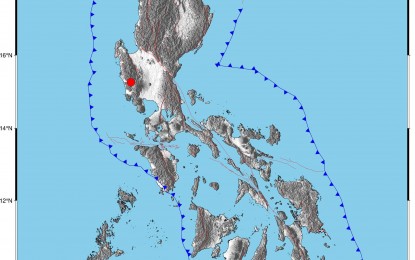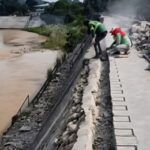MALASIQUI, Pangasinan – A magnitude 5.1 earthquake struck Zambales at 5:32 p.m. on Saturday.
It was also felt in Bulacan, La Union, Nueva Ecija, Tarlac, and Pangasinan.
The Philippine Institute of Volcanology and Seismology (Phivolcs) reported that the epicenter of the tectonic earthquake, with a depth of 102 kilometers, was in Botolan town.
Intensity III was recorded in Botolan and Cabangan; and Intensity II in the National Capital Region cities of Manila and Marikina.
The Pangasinan Provincial Disaster Risk Reduction and Management Office recorded Intensity I in Lingayen town.
Phivolcs said aftershocks were expected.
Zambales
Zambales is a province on the western coast of Luzon in the Philippines, known for its long coastline, volcanic landscapes, and Subic Bay. Historically, it was a major base for the Spanish colonial fleet and later a crucial United States naval facility until the early 1990s. Today, the area is a popular tourist destination, famed for its beaches, surfing spots, and the natural attractions of Mount Pinatubo, which famously erupted in 1991.
Bulacan
Bulacan is a province in the Philippines located just north of Manila, renowned for its significant role in the country’s history. It was a major center of activity during the 1896 Philippine Revolution against Spanish colonial rule. Today, the province is known for its historical landmarks, vibrant festivals, and local delicacies.
La Union
La Unión is a province and coastal region in the northern Philippines known for its surfing destinations, particularly in the town of San Juan. Historically, it was a significant trading port during the Spanish colonial era. Today, it also hosts a vibrant arts and music scene, anchored by the annual “Animo” sand sculpture festival.
Nueva Ecija
Nueva Ecija is a landlocked province in the Philippines, located in the Central Luzon region. Historically, it was a major frontier during the Spanish colonial era and later became a hotbed of rebellion, earning it the nickname “The Rice Granary of the Philippines” due to its vast agricultural plains. Today, it remains a primary producer of rice and onions in the country.
Tarlac
Tarlac is a province in the Central Luzon region of the Philippines, known for its rich, multicultural heritage and significant role in the country’s history. It was a major center of activity during the Philippine Revolution against Spain and later served as the capital of the First Philippine Republic under President Emilio Aguinaldo in 1899. Today, it is celebrated for its agricultural lands and as a melting pot of various ethnic groups, including the Kapampangan, Ilocano, and Pangasinan peoples.
Pangasinan
Pangasinan is a coastal province in the northwestern Philippines known for its stunning beaches, such as those in the Hundred Islands National Park. Historically, it was a significant pre-Hispanic settlement with a distinct language and culture, and it later became a major center for the Spanish colonial galleon trade. Today, it is also famous for its sweet mangoes and thriving aquaculture industry.
Botolan
Botolan is a municipality in the Zambales province of the Philippines, known for its rich cultural heritage as the homeland of the indigenous Aeta people. Historically, the area was significantly impacted by the 1991 eruption of Mount Pinatubo, which dramatically altered its landscape and displaced many residents. Today, Botolan is recognized for its natural attractions, including the scenic Bancal River and efforts to preserve Aeta culture and traditions.
Manila
Manila is the capital city of the Philippines, located on the eastern shore of Manila Bay. Founded by Spanish conquistadors in 1571, it served as the center of Spanish colonial rule for over three centuries and was a major trading hub for the Manila-Acapulco Galleon Trade. Today, the city is a densely populated metropolis blending historic Spanish-era landmarks, like the walled city of Intramuros, with modern urban development.






